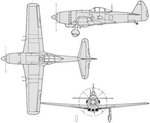This passage below comes from: Messerschmitt Me-262 Arrow to the Future by Walter Boyne
Pg 36 - speaking of the head of Jumo's jet engine program...
"Franz had started with just a few key people, and as he was unable, under the Reich's labor priority system, to hire engineers from the already hard pressed piston engine community, he was forced to take new engineers, just graduated from school, and press them into service. It was not until 1944 that the entire jet division grew to more than 500 people."
Man-o-man...
Meanwhile, P&W had 39,000 people working on engine development...
Moss
Pg 36 - speaking of the head of Jumo's jet engine program...
"Franz had started with just a few key people, and as he was unable, under the Reich's labor priority system, to hire engineers from the already hard pressed piston engine community, he was forced to take new engineers, just graduated from school, and press them into service. It was not until 1944 that the entire jet division grew to more than 500 people."
Man-o-man...
Meanwhile, P&W had 39,000 people working on engine development...
Moss
Last edited:



